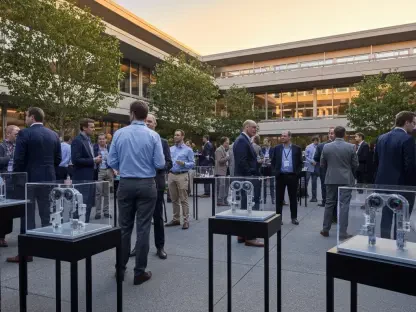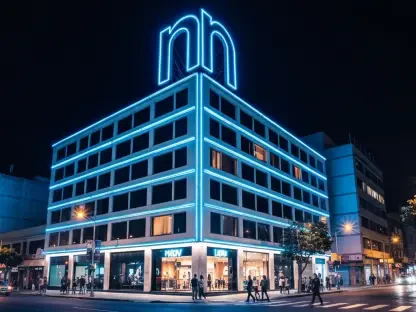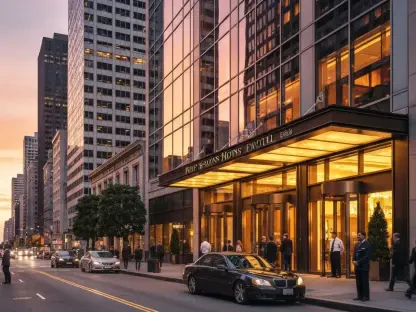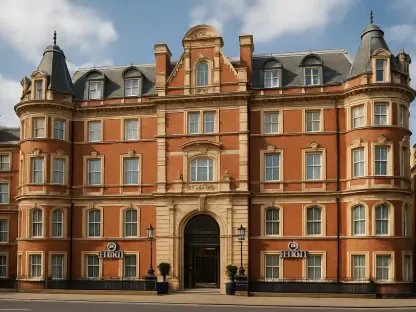Katarina Railko is a distinguished expert in the hospitality field, recognized for her work in the travel and tourism industry. Her insights into entertainment and events, particularly expos and conferences, have made her a key figure in hospitality. Today, Katarina shares her perspectives on Hilton’s recent achievements in luxury and lifestyle hotels, offering a detailed look into their expansion plans and industry trends.
Can you provide more details about the recent milestone of opening Hilton’s 1,000th luxury and lifestyle hotel globally?
Absolutely, Hilton’s achievement of opening its 1,000th luxury and lifestyle hotel marks a significant moment in the company’s journey. This milestone reflects Hilton’s commitment to growth and the increasing demand for premium accommodations. With around 500 hotels in the pipeline, it’s evident that the brand is amplifying its presence to cater to a wider audience.
What factors contributed to Hilton’s record year of growth, particularly in the luxury and lifestyle divisions?
Several factors have propelled Hilton’s growth, especially in its luxury and lifestyle divisions. Strategic partnerships and acquisitions have expanded the portfolio, while the addition of nearly 100,000 rooms showcases Hilton’s ability to recognize and capitalize on evolving market trends. This focus on diversification has been key to attracting a broader base of travelers seeking luxury and unique experiences.
How does Hilton plan to serve travelers for any stay occasion, as mentioned by Chris Nassetta, CEO of Hilton?
Hilton’s strategy to serve travelers for any occasion is rooted in its diverse range of brands, each catering to specific needs, from business to leisure and everything in between. By continuously expanding its luxury and lifestyle portfolio, Hilton ensures that travelers find the perfect hotel that matches their unique requirements for comfort, experience, and location.
What are some of the upcoming luxury and lifestyle hotel openings that Hilton is excited about?
Hilton is thrilled about several upcoming launches that will further enrich their luxury and lifestyle offerings. The anticipated openings include prestigious destinations like the Waldorf Astoria New York and Conrad Hamburg, and ventures into new markets with Curio Collection by Hilton in Thailand. These expansions reflect Hilton’s ambition to cement their global presence.
How does the opening strategy align with Hilton’s goal of having the best hotel brands in the luxury and lifestyle categories globally?
Hilton’s opening strategy is meticulously crafted to ensure they offer unrivaled quality and service. By consistently unveiling properties in key and emerging markets, Hilton strengthens its position as a leader in luxury and lifestyle accommodations, showcasing brands that deliver not only opulence but also culturally immersive experiences.
Can you elaborate on the significance of the Waldorf Astoria New York and other high-profile openings?
The Waldorf Astoria New York is emblematic of Hilton’s legacy and innovation. Such high-profile openings are pivotal as they underline Hilton’s expertise in transforming historical sites into luxurious destinations that blend heritage with modern hospitality. This approach is mirrored in other locations, reinforcing Hilton’s dedication to unforgettable travel experiences.
What challenges does Hilton face in maintaining and expanding a global luxury and lifestyle portfolio?
Expanding globally presents challenges such as adapting to local cultures, navigating regulatory landscapes, and ensuring consistent brand standards. However, Hilton’s extensive experience and thorough market research allow them to overcome these hurdles successfully, maintaining their reputation of exceptional service and varied experiences.
How does Hilton decide on locations for new luxury and lifestyle hotels?
Location decisions for Hilton’s hotels are driven by thorough market analysis and forecasting travel trends. The company’s goal is to identify areas with growth potential and significant demand for luxury accommodations. By engaging with local stakeholders and understanding regional dynamics, Hilton strategically positions its new hotels to maximize impact.
How does Hilton’s partnership with Small Luxury Hotels of the World enhance the company’s portfolio?
The partnership with Small Luxury Hotels of the World adds exceptional variety and exclusivity to Hilton’s offerings. It introduces Hilton guests to unique, individually curated properties in stunning locales, thus expanding its reach and appeal while providing diverse travel experiences that go beyond traditional hospitality norms.
Can you discuss the planned NoMad Detroit and the importance of its partnership with Ford Motor Company?
NoMad Detroit is an exciting venture that partners with Ford Motor Company, underscoring the commitment to revitalizing Michigan Central Station. This collaboration highlights Hilton’s innovative approach to infusing historical significance with modern luxury, enhancing Detroit’s cultural landscape while providing a unique hospitality offering.
How is Hilton aiming to expand the Graduate by Hilton brand, particularly internationally?
Hilton sees tremendous potential in expanding the Graduate by Hilton brand internationally, targeting university-anchored towns worldwide. This strategic expansion helps Hilton reach new demographics and fosters connections with academic communities, enhancing the brand’s ethos of offering accommodations that support intellectual and cultural engagement.
Can you share more about Hilton’s strategy for including unique properties through its partnership with Small Luxury Hotels of the World?
Hilton’s strategy involves a careful selection of unique properties that offer guests distinctive experiences. Through this partnership, Hilton incorporates bespoke and locally inspired designs into these hotels, enriching its portfolio with a blend of traditional luxury and personalized service that appeals to discerning travelers seeking authenticity.
What trends are influencing the development and design of Hilton’s new hotels?
Current trends shaping Hilton’s hotel designs include a focus on sustainability, authenticity, and technological integration. Modern travelers are looking for eco-friendly options without compromising luxury, while still desiring immersive local experiences. Hilton responds by creating spaces that are both high-tech and environmentally responsible.
How does the company ensure brand consistency across different countries and cultures within its luxury and lifestyle portfolio?
Brand consistency is maintained through rigorous standards and constant training, ensuring that every Hilton property, regardless of location, upholds the company’s commitment to quality and service. Adapting to local cultures while preserving core brand values allows Hilton to offer a cohesive experience to all guests worldwide.
Could you provide insights into the renovation of Michigan Central Station for NoMad Detroit?
The renovation of Michigan Central Station for NoMad Detroit is a landmark project that focuses on marrying historical architecture with contemporary luxury. It involves preserving the station’s rich history while updating facilities to create a vibrant cultural hub. This project showcases Hilton’s expertise in breathing new life into iconic spaces.
What long-term goals does Hilton have for its luxury and lifestyle brands in terms of global reach and market impact?
Hilton’s long-term vision for its luxury and lifestyle brands encompasses achieving a dominant global presence while continuously enhancing market impact. They aim to innovate and adapt to changing consumer preferences, ensuring that their brands remain leaders in providing exceptional and personalized travel experiences.
How does Hilton plan to differentiate its luxury and lifestyle hotels from competitors within the hospitality industry?
Hilton differentiates its hotels through an unwavering commitment to innovation, exceptional quality, and unique guest experiences. By prioritizing design excellence, local authenticity, and sustainability, Hilton ensures its luxury and lifestyle offerings stand out amidst a competitive backdrop, appealing to travelers seeking distinctive and enriching stays.
What role does innovation play in Hilton’s strategy for expanding its luxury and lifestyle offerings?
Innovation is pivotal to Hilton’s strategy, driving the creation of cutting-edge facilities and experiences that resonate with modern travelers. By embracing technology and creative solutions, Hilton not only enhances guest satisfaction but also positions its luxury and lifestyle brands at the forefront of industry evolution.
How are sustainability and responsible business practices integrated into Hilton’s new developments?
Hilton integrates sustainability and responsible practices through energy-efficient designs, waste reduction initiatives, and community engagement. Every new development considers local environmental impact, ensuring both luxury and ecological responsibility are seamlessly woven into guests’ experiences, aligning with global standards.
Could you share more about the expansion of Tempo by Hilton internationally and what markets are being targeted?
Tempo by Hilton’s international expansion focuses on markets in Canada and EMEA, targeting locales where demand for flexible yet refined accommodations is growing. This brand aligns with Hilton’s strategy to cater to guests seeking premium design and wellness-oriented atmospheres, appealing to both leisure and business travelers.









